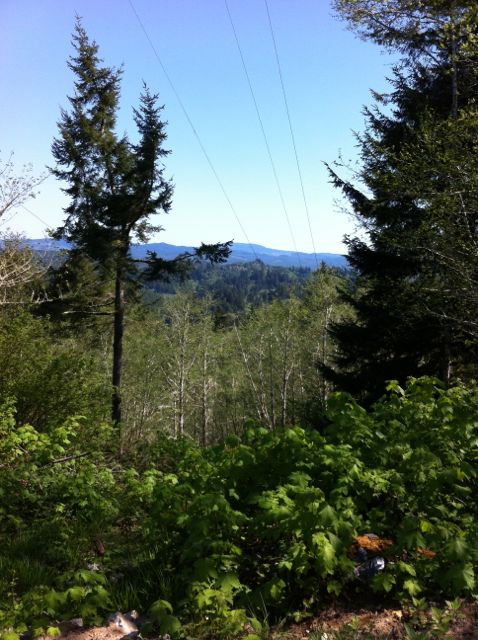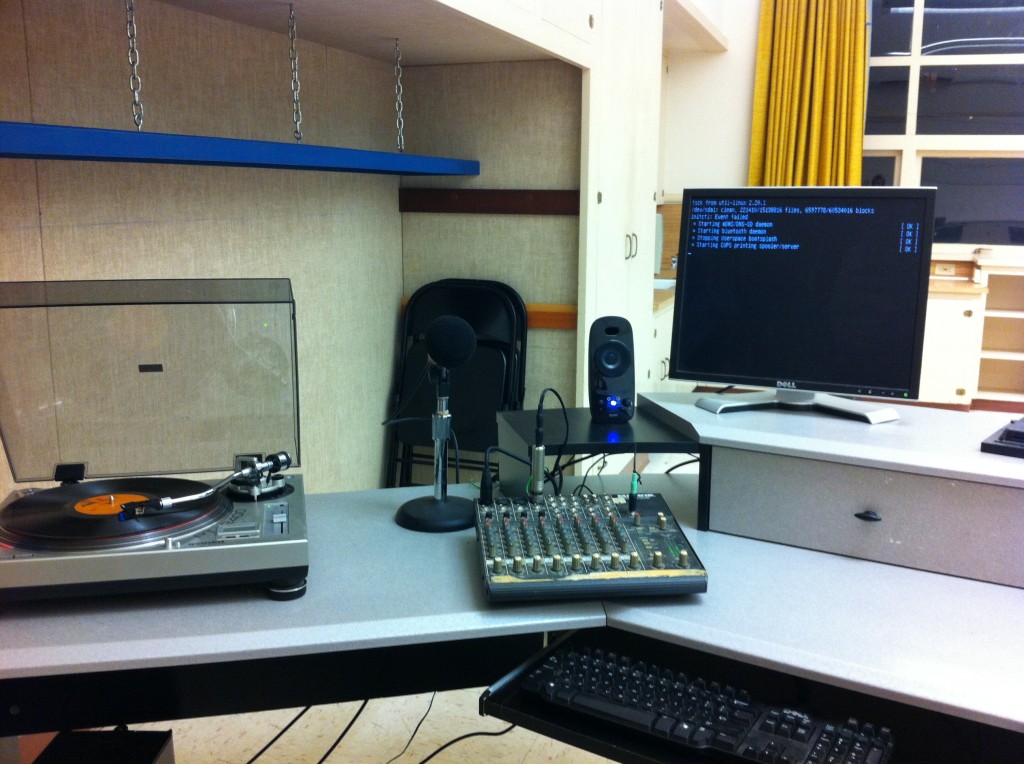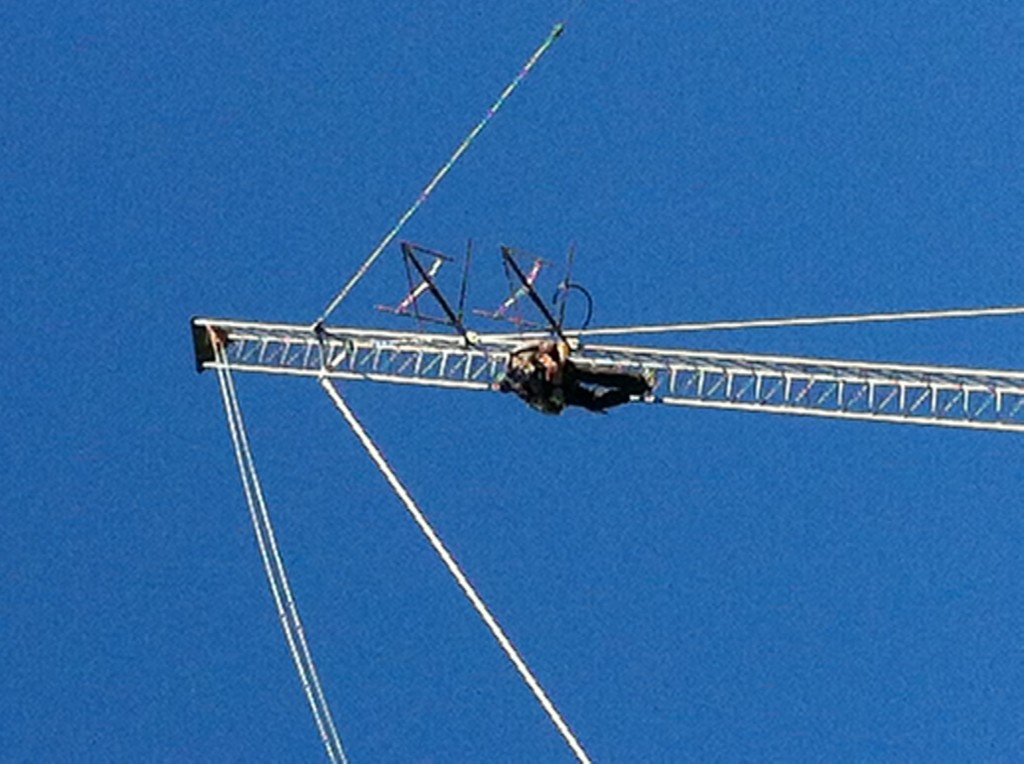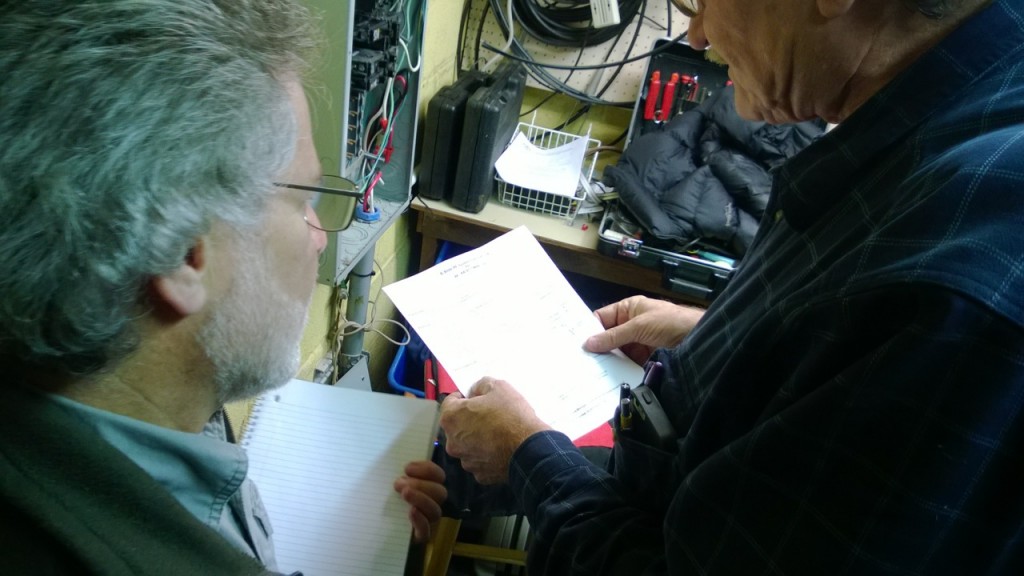 On Friday, January 3, KYAQ (91.7 FM in Siletz, Oregon) went on the air and made way for the people of Lincoln County to shape their first local non-commercial radio station. According to Project Manager Alan Searle, “KYAQ is the only locally-originated, non-commercial signal for this area and it wasn’t built for a clique.”
On Friday, January 3, KYAQ (91.7 FM in Siletz, Oregon) went on the air and made way for the people of Lincoln County to shape their first local non-commercial radio station. According to Project Manager Alan Searle, “KYAQ is the only locally-originated, non-commercial signal for this area and it wasn’t built for a clique.”
Br
idget Wolfe, Board President of Firebare, the station’s sp
onsoring non-profit, says, “This is a gift to the community, a gathering spot for everyone on the Central Coast to share our wealth of intellectual and artistic resources. The airwaves are crucial to our area, often the only way people can know what is going on.”
Located on the northern Oregon coast, Lincoln County has a population of about 45,000, spread over 1200 square miles. According to Searle, KYAQ will blanket remote pockets of this vast county. He says, “While the community is served by good public radio signals, th
 To some extent, KYAQ was conceived after a fortuitous connection between Wolfe andese stations don’t reflect what’s going on here or often even what’
To some extent, KYAQ was conceived after a fortuitous connection between Wolfe andese stations don’t reflect what’s going on here or often even what’
s going on in Oregon.” And so, the station’s website announces, “This portion of the radio dial will belong to you—the local residents in its range…”
Pacifica’s Amy Goodman. Wolfe says, “In the spring of 2007, my husband John Crawford and I decided to mark his birthday with a trip to Ashland to hear Goodman speak. John and I had lived in Los Angeles before moving to the Oregon Coast and were avid KPFK listeners and supporters. We were frustrated by the lack of alternative voices in the area. We
met people in Ashland who had similar concerns; listening to Amy inspired us.”
A local non-profit, Firebare, signed on as sponsor and, with the help and guidance of the Prometheus Radio Project
http://www.prometheusradio.org/, the group applied for a radio frequency. Firebare was initially rated second among eight competing applicants. In 2011, when the number one applicant withdrew, Firebare was issued its FCC construction permit to build a station, with a three-year deadline.
The community got to work.

Community members, individuals and institutions, artists and musicians, belly dancers and a salsa DJ, all pitched in to raise money. Local artists collaborated to create a video for an Indiegogo campaign and designed the station’s “Find Your Voice” posters, “to increase public awareness of KYAQ and how it will promote democracy, be a home to free expression, stimulate investigation of new ideas and become Lincoln County’s premier creative outlet.” National support came from Amy Goodman and Mike Malloy who called in during station fundraisers and David Barsamian of Alternative Radio who spoke at a local event.
Some six to eight months into this process, Crawford met Searle. Searle recalls, “I was standing in line at the feed store when I ran into Firebare Board Member John. It was a once-in-a-lifetime opportunity.” Wolfe says, “We could not have done it without Alan.”
Searle says, “From the onset, we demonstrated what an engaged community station can do.” KYAQ operated as an internet station and broadcast live local music events, such as the Celtic Festival and the Oregon Food Bank’s Waterfront Blues Festival.
The station also maintained a news, information and opinion website significant in its scope and size. The site’s home page offers some 50 pages of articles addressing local and national arts and public affairs (“Public Hearing March 4 for Proposed Navy War Testing,” “INS Documentary Screened,” “No Shenanigans! It’s the Shamrock Supper”). Its “Community Information” section sorts 35 pages of articles that range in content from the immediately practical and wise (“Drive Sober or Get Pulled Over”) to the essentially informative (“Medicare Signup Assistance Friday in Waldport”). Its “Opinion” section encourages local debate.
And, during the early years, the website promoted the station project with construction updates, video commentaries from locals as well as national personalities, and live video coverage of the National Conference for Media Reform.
Then, finally, came January 3, 2014; and, with some 14 hours of grace time before the FCC construction permit expired, KYAQ went on the air and commenced regular broadcast operations.
That was the first milestone. Now the station’s studio will be constructed in Toledo and an essential operating staff must be created. The station’s website announces station job opportunities, calls for volunteers, and encourages community members to become founders because “everyone has a stake and a say.”
A Programming Advisory Committee, composed of 10 to 12 local volunteers, is already busy learning about both radio and community needs. Wolfe says, “A Spanish-language program is ready to go and will probably be the first locally-produced program to air.”
Their long-term programming plan is a mix of music, art, public affairs and news programming—radio dramas and remote broadcasts, including City Council meetings and County Commission meetings. According to Wolfe and Searle, this will help make information about critical local issues accessible to area residents who can’t get to the meetings and don’t have Internet access.
Significant effort is being put into building human and technological resources for local news coverage. Free training is available for positions both on-air and in production. Searle, who has 30 years experience as a broadcast journalist, including positions with both Minnesota Public Radio and Free Speech Radio News, will facilitate the program and hopes that a volunteer newsroom will be in operation this year.
Searle also has served as publisher of the local news website and paper Yaquina Wavelength since 2010. In February of 2013, the station acquired his publication, creating an immediately accessible local news archive at news.kyaq.org. Over 3 years worth of news and archives going back to 2010 were turned over to the radio station.
While the studio is under construction, the station is broadcasting an automated sequence of pre-produced and nationally syndicated programs from Pacifica Network. Wolfe says that they are receiving good feedback. “People are delighted with what they’re hearing.” Programs include Free Speech Radio News, Making Contact, Business Matters, Radio Curious, Culture Shocks, Alternative Radio, Sea Change Radio, and The Writer’s Voice.
From the beginning, KYAQ has been a Pacifica affiliate. As Wolfe was first inspired by Amy Goodman, so Searle, as Project Manager, has had long association with the Pacifica network. About affiliation, Searle says, “I’ll take credit for that. Prior to September of this year, I was working at FSRN as their administrator, so I was very familiar with the entire panoply of Pacifica products and content and players and all of the great stuff that’s available on Audioport. I suggested to the Board that they might want to affiliate with Pacifica, which they did. Although we have a loose affiliation with other community radio stations here in Oregon, a group that has just formed within the last year, it is also important for a station to be connected nationally and internationally, and clearly the ability to have access to programs being produced in New York and LA and San Francisco and other major markets and minor markets where Pacifica is affiliated is a good thing. It’s important for a wide range of views to be available, and I know the Board is very excited about it.”
The people of Lincoln County are building a station to suit their lives. Wolfe makes one final point: Firebare, she says, is “an old English term for a beacon, a signal on the hill. This is what we want to be: the beacon that sends essential information to the people.” KYAQ wants to be “Your Local Public Radio Station.”
Information for this article came from interviews with Alan Seale and Bridget Wolfe as well as from KYAQ’s websites (kyaq.org and news.kyaq.org). KYAQ can be contacted at 541 264-5917 (voicemail only) and comment@kyaq.org. Volunteers can contact the station at volunteer@kyaq.org.
